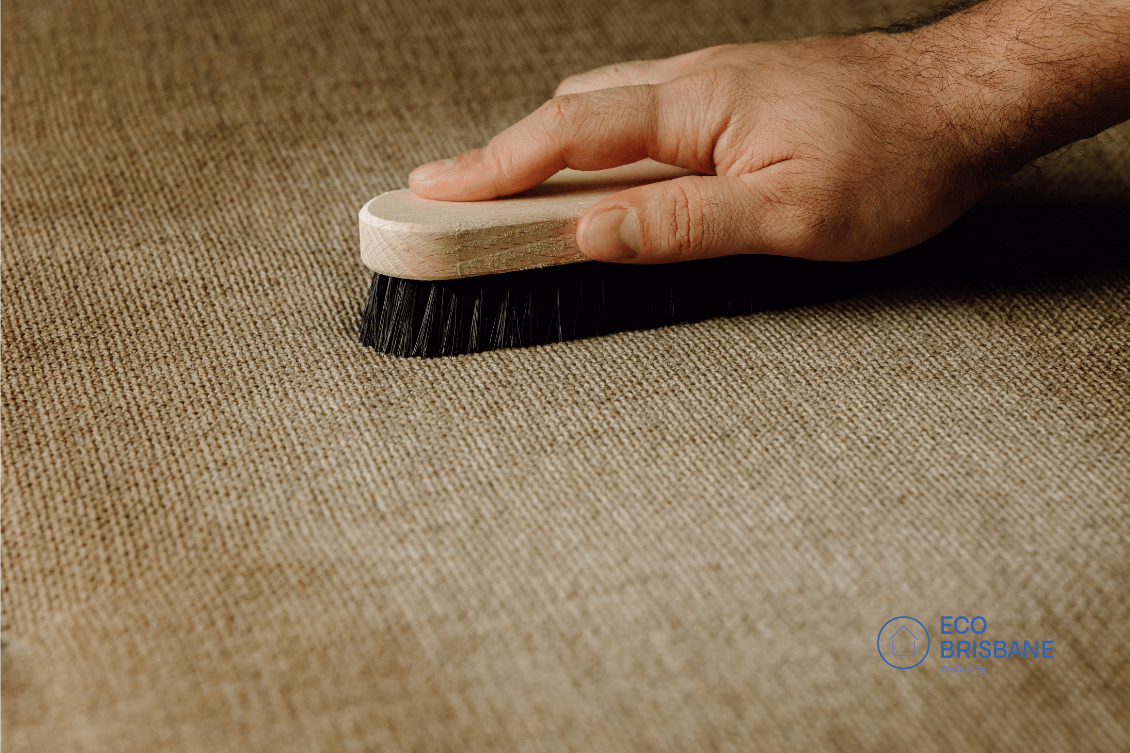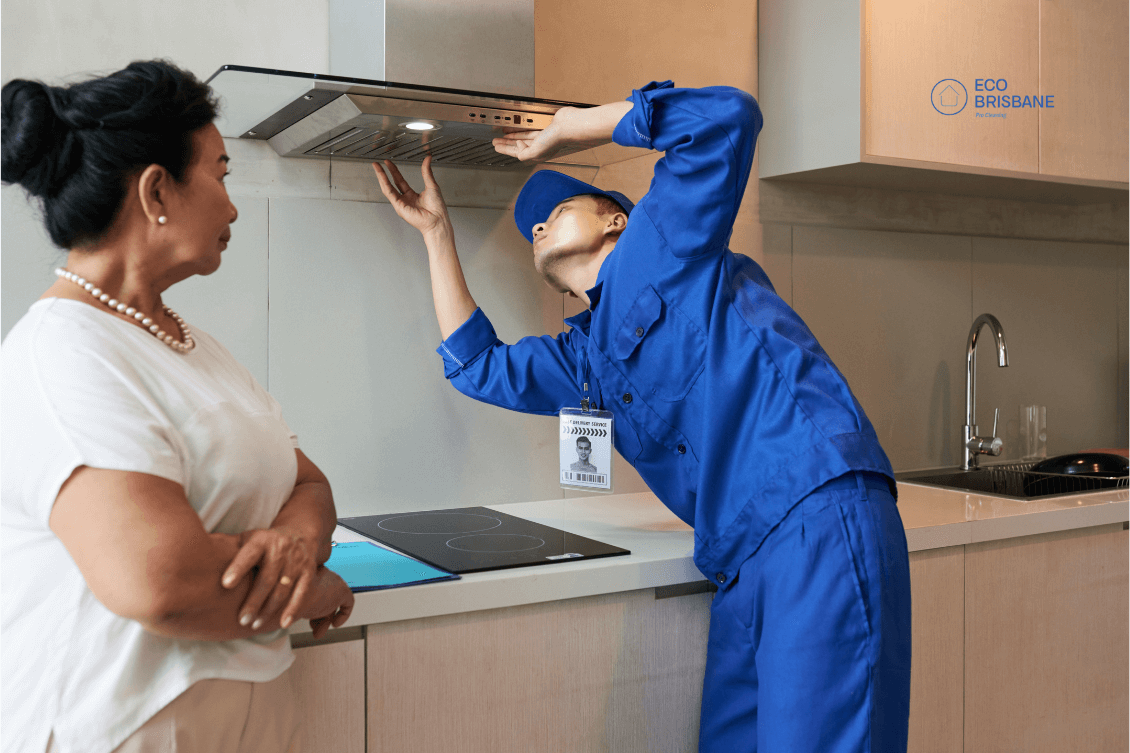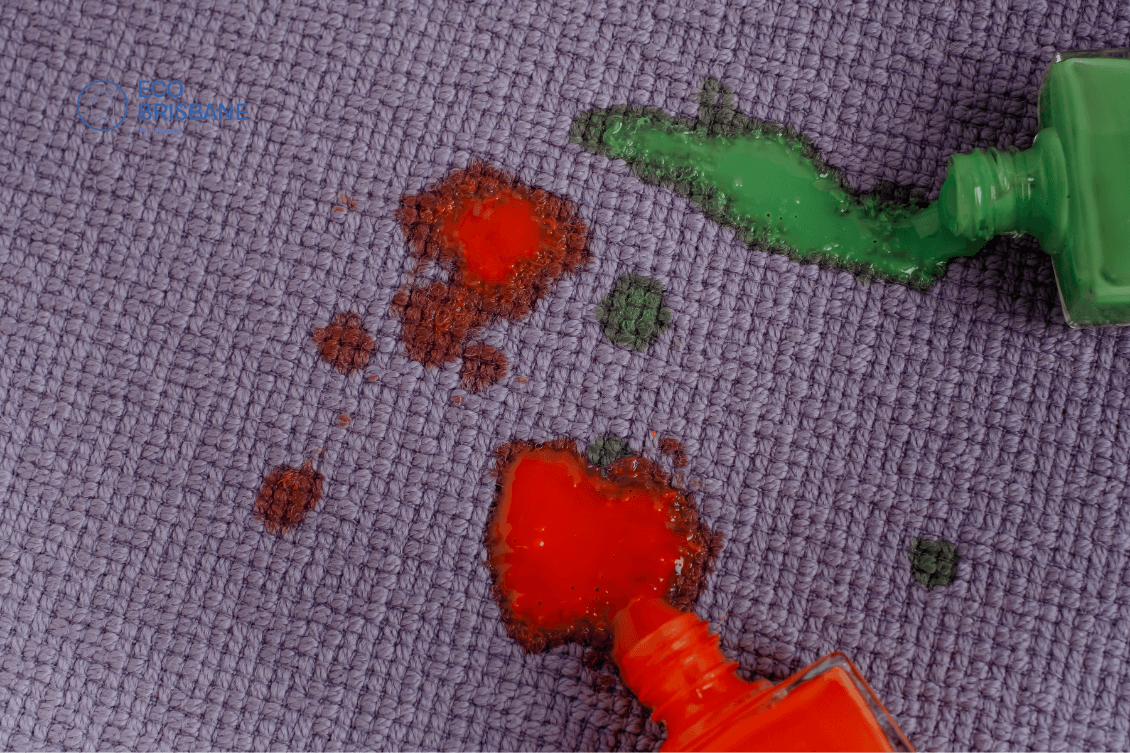Carpets can quickly become dirty and stained with regular use. Learning how to remove some of the most common carpet stains can help you keep your carpets looking cleaner for longer. Here’s a look at some of the most common carpet stains you’re likely to encounter, along with tips for how to remove them effectively. As a homeowner in North Brisbane, follow these tips and extend the lifetime of your carpets.
Table of Contents
Red Wine Stains
Red wine is notorious for leaving behind hard-to-remove stains. The dark colour contains pigments that can easily soak into carpet fibres. Here are some of the stain removal techniques you can follow when you have a wine stain.
- Blot the stain immediately with a clean, white cloth or paper towel. Don’t rub, as this can further set the stain.
- Mix a solution of cold water, dish soap, and vinegar. Dab it onto the stain with a sponge.
- Cover the stain with baking soda or salt for a few hours to draw out more of the colour.
- Rinse the area with clean water and blot dry.
You may need to repeat this process a few times for set-in stains.
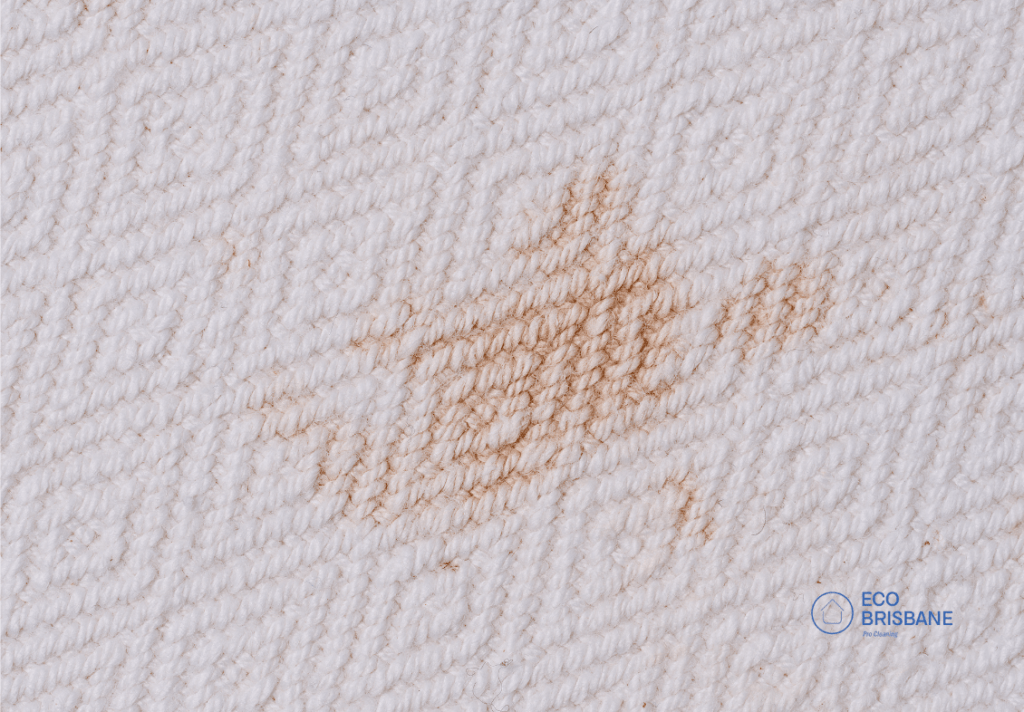
Pet Urine Stains
Pet stains on carpets have an unpleasant odour and ugly yellow or brown discolouration. By following these steps for carpet cleaning, you can get rid of the pet stains.
- First, blot up as much of the urine as possible. Use an enzymatic pet stain cleaner to help break down the compounds in urine that cause odours and stains.
- Mix equal parts water and distilled white vinegar and spray it onto the stain. This helps deodorize and disinfect.
- Sprinkle baking soda over the stain while still wet and let sit for a few hours. Baking soda will help absorb odours.
- Vacuum up the baking soda then rinse the spot with clean water.
Coffee Stains
Coffee spills can leave light to dark brown stains on carpets along with lingering coffee odors. Here is an effective removal method:
- Blot freshly spilt coffee immediately with an absorbent white cloth or paper towel.
- Mix dish soap with hydrogen peroxide and use a soft-bristled brush to gently scrub the stained fibres.
- Rinse the area thoroughly with clean water then blot dry.
- Deodorise by sprinkling baking soda over the stain while still slightly damp.
- Let the baking soda sit for at least 15 minutes then vacuum.
If needed, use an upholstery attachment to extract any remaining moisture from the carpet backing.
Oil and Grease Stains
Kitchen grease and oils, like bacon grease, leave ugly grease stains and are magnets for dirt. These are some of the best tips for removing oil and grease stains.
- Start by blotting up any excess grease you can with paper towels or rags.
- Mix equal parts dish soap and vinegar in a spray bottle. Lightly spritz the stain then gently scrub with a soft-bristled brush.
- Rinse thoroughly with clean water and blot dry.
- Repeat as needed for stubborn stains.
The dish soap helps cut through grease while the vinegar disinfects.
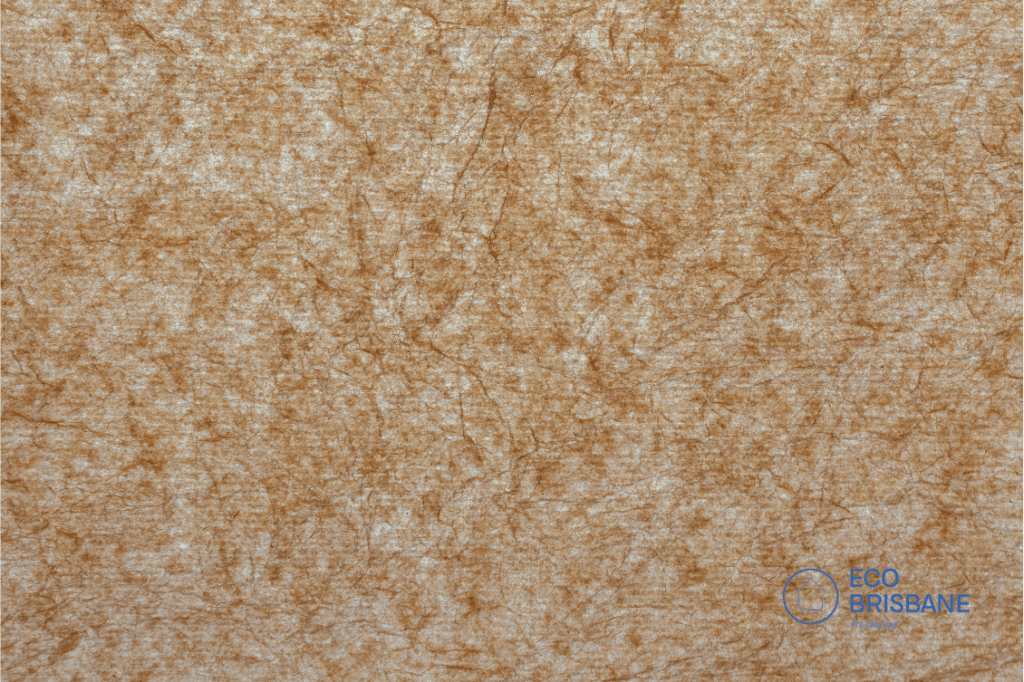
Ink Stains
Ink stains like pens, markers, or highlighters can soak into the carpet and be tricky. However, try these steps when removing stains created by stains.
- Blot the stain with a cloth soaked in rubbing alcohol. Carefully brush towards the centre of the stain as you blot.
- Mix one tablespoon of clear dish soap with two cups of warm water. Use a soft brush dipped in the solution to gently scrub.
- Rinse the area well with clean water. Place white paper towels over the area and weigh them down. This will draw the stain up as the spot dries.
Blood Stains
Blood stains need a little extra elbow grease. Make sure to follow these methods as soon as possible to get rid of difficult-to-remove blood stains.
- Gently blot the blood stain with a damp, cool cloth, or paper towel. Don’t rub too aggressively.
- In a spray bottle, mix two cups of cold water, one tablespoon of liquid dish soap, and one tablespoon of ammonia.
- Mist the solution very lightly over the stain and gently dab at the spot using a soft cloth or soft-bristle brush. Slowly brush from the outside of the stain towards the middle.
- Rinse away all soap residues with clean, cool water. Blot to remove excess moisture.
For stubborn dried blood stains, make a baking soda paste by mixing baking soda with just enough water to form a thick paste. Gently scrub this paste into the stain using a damp cloth, rinse, and blot dry.

Candle Wax Stains
Candle wax can create a sticky, gummy mess when spilt on carpets. This is one of the worst stains that your carpet fibres can accumulate. But the following tips can help you with removing candle wax stains.
- Use a dull knife to scrape away any solid chunks of wax.
- Place a paper bag or brown paper over the wax and iron it on a medium-high setting. The wax will transfer to the paper as it melts.
- Once cooled, the leftover residue can be scrubbed away with a small amount of rubbing alcohol.
- Allow the area to fully dry then vacuum up any remaining wax bits.
Nail Polish Stains
Fresh nail polish is simple enough, but dried polish presents more of a challenge. Follow these blotting techniques which can help you with getting tough nail polish stains removed.
- Dab a small amount of nail polish remover onto a clean white cloth. Gently blot the stain, moving from the outside in.
- Mix a solution of warm water and dish soap. Use a soft-bristled scrub brush dipped in this solution to gently brush the stain.
- Rinse the area thoroughly with clean water, then blot dry.
- Repeat as needed for stubborn, set-in stains. The sooner you can treat it, the better.
Mud and Dirt Stains
Outdoor mud and dirt that gets tracked inside can grind deep into carpet fibres. The solutions below can help you remove mud and dirt stains. You can follow these tips for any carpet or upholstery in high-traffic areas.
- Allow the mud to fully dry first, then gently break up and vacuum to remove anything loose on the surface.
- Mix a solution of lukewarm water, white vinegar, and dish soap. Use a soft-bristle scrub brush dipped into this solution to gently scrub the mud-stained area.
- Blot the area with clean, dry towels to draw up moisture. Weigh towels down as they sit.
- Flush the area with cool, clean water then blot again thoroughly.
Lipstick Stains
Lipstick stains can leave unsightly smears and pinkish discolouration. Use this method:
- Carefully scrape away any solid clumps of lipstick with a dull knife.
- Dab a small amount of rubbing alcohol onto a white cloth. Gently blot the stain until no more colour transfers.
- If any faint staining remains, make a paste with baking soda and water. Gently scrub into the stain with a soft brush then rinse.
- Blot the area dry with an absorbent towel, applying pressure, to extract moisture.
Final Words
Learning how to promptly treat carpet stains can help extend the life and improve the appearance of your carpets. But accidents still happen, so use a combination of removal methods and prevention strategies for clean, fresh carpets.
If the stains are too hard to remove on your own, you will need to get the help of a professional carpet cleaning service. This is where you can contact us at Eco Cleaning Brisbane. Our experts use the right carpet cleaning methods to help you with removing even the toughest stains.
